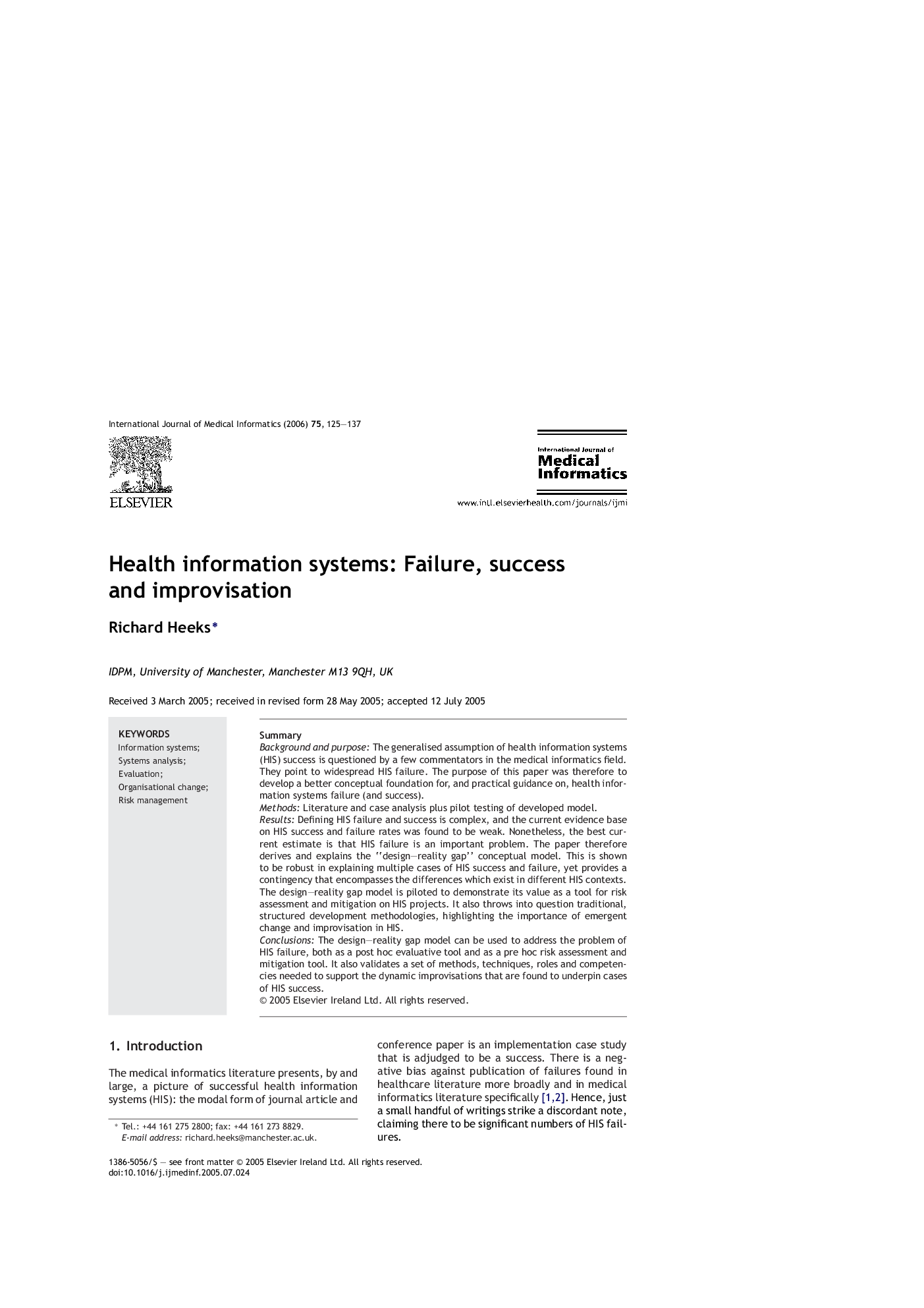| کد مقاله | کد نشریه | سال انتشار | مقاله انگلیسی | نسخه تمام متن |
|---|---|---|---|---|
| 516849 | 1449221 | 2006 | 13 صفحه PDF | دانلود رایگان |

SummaryBackground and purposeThe generalised assumption of health information systems (HIS) success is questioned by a few commentators in the medical informatics field. They point to widespread HIS failure. The purpose of this paper was therefore to develop a better conceptual foundation for, and practical guidance on, health information systems failure (and success).MethodsLiterature and case analysis plus pilot testing of developed model.ResultsDefining HIS failure and success is complex, and the current evidence base on HIS success and failure rates was found to be weak. Nonetheless, the best current estimate is that HIS failure is an important problem. The paper therefore derives and explains the “design–reality gap” conceptual model. This is shown to be robust in explaining multiple cases of HIS success and failure, yet provides a contingency that encompasses the differences which exist in different HIS contexts. The design–reality gap model is piloted to demonstrate its value as a tool for risk assessment and mitigation on HIS projects. It also throws into question traditional, structured development methodologies, highlighting the importance of emergent change and improvisation in HIS.ConclusionsThe design–reality gap model can be used to address the problem of HIS failure, both as a post hoc evaluative tool and as a pre hoc risk assessment and mitigation tool. It also validates a set of methods, techniques, roles and competencies needed to support the dynamic improvisations that are found to underpin cases of HIS success.
Journal: International Journal of Medical Informatics - Volume 75, Issue 2, February 2006, Pages 125–137